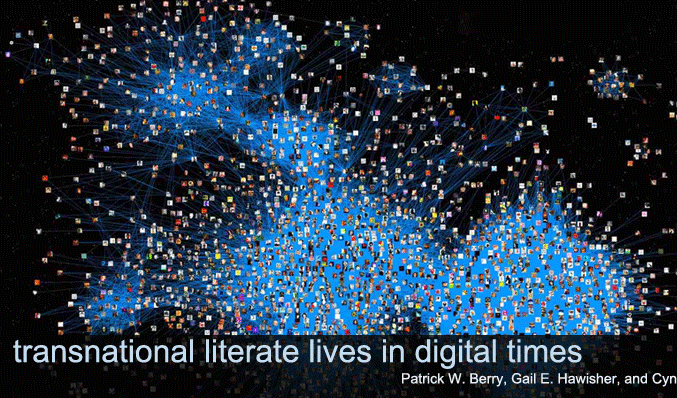INTRODUCTION: Some Background on this Project
It is difficult for many of us at this time in history to view, read, or listen to a news report without a deep sense of how rapidly the world is changing and how intimately our lives and the particular parts of the earth we inhabit—Columbus, Ohio; Syracuse, New York; Urbana, Illinois; and many other cities of the world—are connected to other places and other people around the globe.
Despite past political efforts to promulgate fear and national policies of isolationism, many teachers and researchers who interact on a daily basis with students and colleagues from a range of other countries have come to realize that our lifeworlds and futures are intimately connected to the lifeworlds and futures of people in places as far-flung as Bangladesh, Norway, China, Australia, and parts of Africa, to name just a few, and on dimensions that extend far beyond the limits of world markets.
It is for reasons related to these understandings that some scholars in literacy studies (e.g., Horner and Trimbur, 2002; Matsuda, 2006; and Canagarajah, 2002, 2007, among them) have been encouraging those of us in rhetoric and composition to make what Wendy Hesford (2006) calls the “global turn” (p. 787); to explore—with increased energy, focus, and understanding—the expanded possibilities of an “imagined global geography” (p. 788).

Representations and the researcher: Images of Berry, Hawisher, and Selfe
Learning to live gracefully in a global world and to understand its cultural, linguistic, and communicative complexities, however, is not a task to be underestimated, and not one for which those of us in the United States have historically been recognized. Thus we focus this digital project on the life histories and digital literacies of those who inhabit contemporary transnational contexts. In this work, we attempt to take into account both the local perspectives of people themselves and some of the complex processes of globalization that have shaped literate lives in an increasingly technological world. We thank Eileen Schell, who, after reading a draft of our research at the Virginia Tech Feminist Research Methodology Symposium (2007), suggested we take a look at the scholarship currently being published in transnational studies. See also Hesford and Schell (2008) for a discussion of feminist rhetorics and transnationality.
In focusing on those with transnational connections, we hope to highlight a growing population of individuals who feel at home in more than one culture and whose identifications, as Wan Shun Eva Lam (2004) notes, are “spread over multiple geographic territories” (p. 79). These individuals typically speak multiple languages, often including variations of World Englishes, and maintain rich, active networks of friends, family members, and contacts around the globe.
Some—but not all—of these people are part of diasporic movements motivated by wars in their homelands; some migrate and travel along the economic vectors of globalization; others move across conventional geopolitical borders because they seek education abroad and, in the process, develop new literate practices marked by their latest cultural experiences.
Many of those with transnational connections, alone or with their families, “move physically, economically, and emotionally back and forth across borders and between cultures” (Martinez-Leon & Smith, 2003, p. 138), often using their “multiple subject positions situated in various cultural and sociopolitical arenas to subvert the social categories imposed on them by any one system” (Lam, 2004, p. 81) and forming part of a community that is characterized by a recognition of the importance of social relations dependent on new communication and transportation technology that includes but is not limited to phones, videos, faxes, and jet aircraft (Binford, 1999).
In particular, we focus on the digital literacy practices and values of these individuals and how they shape and are shaped by the global landscapes they inhabit. Digital literacy practices—employing mobile phone exchanges, e-mail, instant messaging, texting, chatrooms, fan forums, Facebook, Twitter, and other social networking tools—provide a social glue that helps hold together the families, friends, and communities with which many of the individuals associate. These Information and Communication Technologies (ICTs) or digital communication tools, as Anastasia Panagakos and Heather Horst (2006) note, allow for the “cultivation of ethnic, cultural and national expressions with a global reach” and support challenges to some of the “restrictive boundaries imposed by dominant host societies and the limitations of physical space and time…” (pp. 117–118).
In this work, we attempt to balance our understanding of global trends, which include the increasing reach and scope of expanded digital networks, with individuals’ own personal experiences and local sense of place, identifying the specific historical, political, and social factors that influence the uptake, use, and availability of digital technologies in various places and at various times. Through the rich narratives and writing process videos of transnationally connected graduate students, we also attempt to include their perspectives on digital communication technologies: the economic costs and variability of access, the material qualities of specific technologies, and the mobility or immobility of various users, as well as issues associated with gender, age, and class; cultural values; historical circumstances; pragmatic needs; and the everyday local activities of living.
previous < > INTRODUCTION: Goals of Project















